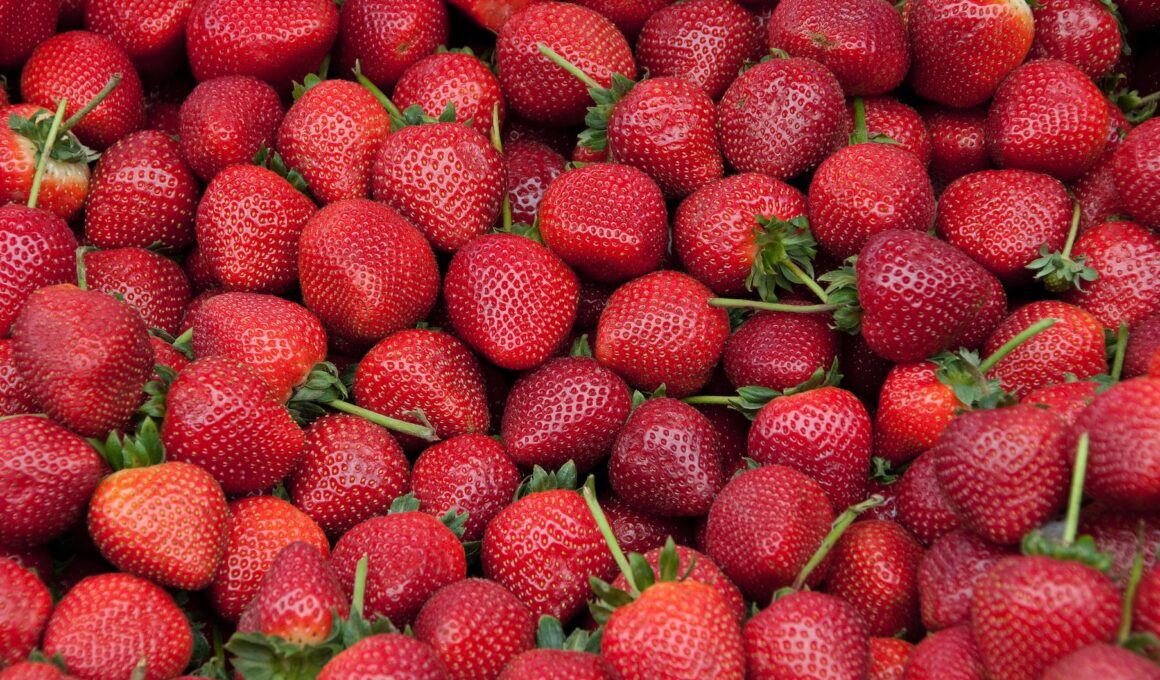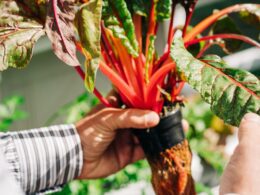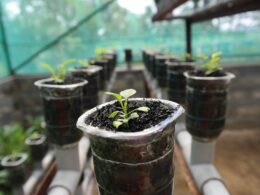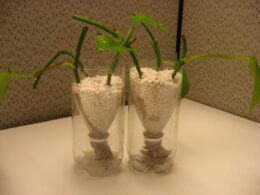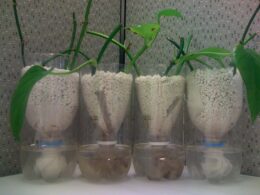Are you noticing your hydroponic strawberries turning brown? It can be frustrating to see your hard work not produce the vibrant, juicy fruit you were hoping for.
However, there are several common reasons why this may be happening, and with a little troubleshooting, you can get your hydroponic strawberries back on track.
In this article, we will explore the root causes of brown strawberries in hydroponic systems. We will discuss the importance of proper oxygenation, balancing nutrients and pH levels, and preventing environmental stressors in your hydroponic system.
By understanding these key factors, you can take steps to prevent brown strawberries and ensure that your hydroponic system is producing healthy, delicious fruit.
So let’s dive in and get to the bottom of why your hydroponic strawberries may be turning brown.
Understanding the Root Cause of Brown Strawberries in Hydroponic Systems
You’re probably wondering why your hydroponic strawberries are turning brown. Well, one of the main culprits is hydroponic strawberry pests. A common pest that affects hydroponic strawberries is the spider mite. These tiny creatures can be challenging to spot, but their damage is evident. They pierce the leaves and suck the sap, leading to discoloration and browning. To prevent spider mites from attacking your strawberry plants, regularly check them for signs of infestation and apply an insecticidal soap or neem oil.
Another reason why your hydroponic strawberries are turning brown is due to improper pruning techniques. Pruning is essential in hydroponic systems to promote healthy growth and prevent disease. If you don’t prune your strawberry plants correctly, they can become overcrowded, leading to poor air circulation, which can invite fungal diseases. To prevent this, use sterilized pruning tools and remove any yellow or brown leaves, dead stems, and runners. Prune the plants regularly to promote healthy fruit production and prevent overcrowding.
In summary, if you’re noticing brown or discolored strawberries in your hydroponic system, it’s crucial to identify the root cause. Check for hydroponic strawberry pests and apply insecticidal soap or neem oil to prevent infestation.
Additionally, ensure that you’re using proper pruning techniques to promote healthy growth and prevent disease. By taking these steps, you’ll be on your way to growing healthy, vibrant strawberries in your hydroponic system.
Importance of Proper Oxygenation in Hydroponic Systems
Proper oxygenation is crucial in hydroponic systems because it ensures healthy plant growth and prevents issues that can ruin your hard work.
In hydroponic systems, plants rely on oxygen in the water to survive and thrive. Without proper oxygenation, the water can become stagnant, leading to root rot and other problems that can cause your strawberries to turn brown and die.
To ensure proper oxygenation in your hydroponic system, consider using oxygenation methods such as aeration. Aeration involves pumping air into the water to increase the oxygen levels and promote healthy plant growth. This method can help prevent brown strawberries and other issues caused by poor oxygenation.
The benefits of aeration in hydroponic systems go beyond preventing brown strawberries. It can also promote healthy root growth, improve nutrient uptake, and prevent the growth of harmful bacteria.
So, if you want to ensure the success of your hydroponic strawberry crop, make sure to prioritize proper oxygenation through methods like aeration.
Can Yellow Leaves on Hydroponic Plants Indicate Brown Strawberries?
Can yellow leaves on hydroponic plants indicate brown strawberries? It is possible. Hydroponic plants with yellow leaves may be a sign of nutrient deficiency or stress. If these plants are not receiving the necessary nutrients, it could potentially affect the development of the strawberries, leading to inadequate ripening or even brown discoloration. Monitoring the health of hydroponic plants is crucial to ensure optimal fruit production.
Balancing Nutrients and pH Levels in Hydroponic Systems
When it comes to hydroponic systems, it’s important to maintain a proper balance of nutrients and pH levels. Common nutrient deficiencies can lead to stunted growth and unhealthy plants.
To prevent this, you need to know the strategies for maintaining proper pH levels and nutrient levels in your hydroponic system.
Common Nutrient Deficiencies
If your plants are lacking essential nutrients, they may not be able to reach their full potential and could suffer from discoloration or other issues. This can happen in hydroponic systems when the nutrient solution is not properly balanced or when the pH levels are not within the optimal range.
Common nutrient deficiencies in hydroponic strawberries include:
- Nitrogen deficiency: This can cause leaves to turn yellow and stunt growth.
- Potassium deficiency: This can cause brown spots on leaves and reduce fruit size.
- Calcium deficiency: This can cause blossom end rot, where the bottom of the fruit turns brown and mushy.
To prevent these issues, it’s important to monitor nutrient levels and pH regularly and adjust as needed. Adding a nutrient solution with a balanced mix of essential elements can help prevent nutrient deficiencies and promote healthy plant growth.
Strategies for Maintaining Proper pH Levels
Maintaining optimal pH levels is crucial for ensuring your hydroponic strawberry plants have access to essential nutrients, allowing them to grow and produce healthy fruit. pH management techniques are essential to maintain the pH level of your hydroponic system. The ideal pH range for strawberries is between 5.5 and 6.5. Outside of this range, the plants may suffer from nutrient deficiencies and may not grow as well as they should.
One effective way to maintain pH levels is to use nutrient solution additives. These additives can help to buffer the pH level and prevent it from becoming too acidic or basic. Some common nutrient solution additives include calcium and magnesium, which help to maintain pH levels and provide essential nutrients to the plants. It’s important to monitor the pH level of your hydroponic system regularly and adjust it as needed to ensure your strawberry plants are healthy and producing high-quality fruit. With proper pH management techniques and the use of nutrient solution additives, you can ensure your hydroponic strawberries stay healthy and productive.
| Nutrient Solution Additives | Function | |||
|---|---|---|---|---|
| Calcium | Helps maintain pH levels and provides essential nutrients to plants. | |||
| Magnesium | Helps maintain pH levels and provides essential nutrients to plants. | |||
| Potassium | Helps regulate water and nutrient uptake, improving plant growth and fruit quality. | Phosphorus | Helps with root growth, flower formation, and overall plant health. |
Preventing Environmental Stressors in Hydroponic Systems
Preventing environmental stress in hydroponic systems is crucial for ensuring healthy and vibrant plants. One of the most important factors to consider is light intensity. While strawberries require a lot of light to grow, too much can actually cause damage to the leaves and fruit. It’s important to monitor the light levels in your hydroponic system and adjust accordingly to prevent stress on your plants.
Temperature regulation is also a key factor in preventing environmental stress. High temperatures can cause the leaves to wilt and the fruit to become discolored. On the other hand, cooler temperatures can slow down growth and affect the overall health of the plant. Maintaining a consistent temperature in your hydroponic system is essential for keeping your strawberries healthy and strong.
In addition to monitoring light and temperature levels, it’s important to consider other factors that can cause stress to your plants, such as nutrient imbalances and pests. By taking a proactive approach and implementing strategies to prevent environmental stress, you can ensure that your hydroponic strawberries remain healthy and vibrant throughout the growing season.
Troubleshooting Brown Strawberries in Hydroponic Systems
Troubleshooting browned strawberries in hydroponic systems can be challenging, but don’t panic. There are a few things you can do to save your crop.
Firstly, check if there’s any contamination in your system. Contamination can cause the roots to rot, which will affect the health of your plants and cause them to turn brown. Check your water source, nutrient solution, and equipment for any signs of contamination. Use a sterilizer or hydrogen peroxide to clean your system thoroughly.
Secondly, adjust your lighting if necessary. Too much light can cause the leaves to burn, which will affect the plant’s ability to photosynthesize. This will cause the strawberries to turn brown and wilt. If you notice that your plants are getting burnt, adjust the distance of the light source or reduce the number of hours the lights are on. Ensure that your plants are getting enough light to grow healthily, but not so much that they are getting burnt.
Lastly, make sure that you’re providing your plants with the right nutrients. Nutrient deficiency can cause the leaves to turn brown and reduce the overall health of your plants. Check your pH levels and nutrient solution to ensure that your plants are getting the right nutrients.
Troubleshooting browned strawberries in hydroponic systems can be challenging, but by preventing contamination, adjusting lighting, and providing the right nutrients, your plants can recover and thrive.
Frequently Asked Questions
What are some common environmental stressors that can cause brown strawberries in hydroponic systems?
Water quality and lighting intensity are potential factors in hydroponic strawberry browning. Poor water quality can lead to root rot, which can cause the leaves and fruit to turn brown.
Additionally, high-intensity lighting can cause stress to the plants, leading to browning. It’s important to regularly monitor water quality and adjust lighting intensity to ensure the best growing conditions for your hydroponic strawberries.
By paying attention to these factors, you can help prevent browning and ensure a healthy crop. Remember to always prioritize the health and safety of your plants to achieve the best results.
Can brown strawberries in hydroponic systems be harmful to consume?
If you’re growing hydroponic strawberries, it’s important to know that brown strawberries can be a sign of health concerns. While they may not necessarily be harmful to consume, brown strawberries can indicate problems with your hydroponic system or environment.
Prevention methods include ensuring proper nutrient levels, pH balance, and adequate ventilation. Regular monitoring and maintenance of your hydroponic setup can help prevent brown strawberries and ensure a safe and healthy harvest.
How often should nutrient and pH levels be checked and adjusted in hydroponic systems to prevent brown strawberries?
To ensure healthy strawberries and maximize yield in hydroponic systems, it’s important to regularly check and adjust nutrient and pH levels.
Optimal timing for these checks can vary depending on the specific system and plant type, but a general rule of thumb is to monitor levels at least once a week.
Maintaining proper nutrient and pH levels can prevent issues such as brown strawberries, which can be a sign of nutrient deficiencies or imbalances.
To keep your plants thriving, make sure to follow guidelines for appropriate nutrient ratios and pH levels for your specific hydroponic system.
By staying on top of these crucial factors, you can enjoy a bountiful harvest of delicious, healthy strawberries.
Are there any specific varieties of strawberries that are more prone to browning in hydroponic systems?
When it comes to hydroponic strawberries, there are certain varieties that are less prone to browning than others. The best hydroponic strawberry varieties include Albion, Seascape, and Chandler. These varieties are known for producing large, juicy berries that are less likely to turn brown in a hydroponic system.
However, even with the right variety, it’s important to take steps to prevent browning. Tips for preventing browning in hydroponic strawberries include maintaining proper nutrient and pH levels, ensuring adequate airflow, and avoiding overwatering.
By following these tips and choosing the right variety, you can enjoy beautiful, delicious strawberries from your hydroponic system.
Can using organic vs. synthetic fertilizers affect the occurrence of brown strawberries in hydroponic systems?
If you’re debating whether to use organic or synthetic fertilizers in your hydroponic system, it’s important to consider the nutrient toxicity concerns associated with each option.
While organic fertilizers are often perceived as safer and more environmentally friendly, they can also pose a risk of nutrient toxicity if not properly balanced.
On the other hand, synthetic fertilizers are often more precise in their nutrient ratios, but can also contain chemicals that may be harmful to both the plants and the environment.
Ultimately, the organic vs. synthetic debate comes down to personal preference and finding the right balance for your specific hydroponic setup.
Conclusion
So, you’ve been noticing brown strawberries in your hydroponic system. Don’t worry, it’s a common problem that can be easily fixed.
Firstly, it’s important to understand the root cause of the issue – it could be due to a lack of oxygenation, imbalanced nutrient and pH levels, or environmental stressors.
To prevent brown strawberries, ensure proper oxygenation in your hydroponic system, maintain a balanced nutrient and pH level, and avoid environmental stressors.
By following these steps, you can ensure healthy, vibrant strawberries in your hydroponic system. Happy growing!





